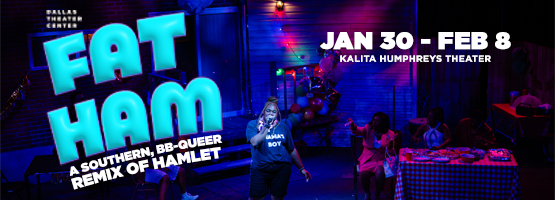Over the span of six months in 2022, Houston sculptor Susan Budge lost her mother, got married, saw her son graduate from high school, built a kiln in a new studio, and was diagnosed with breast cancer. A few months later, she completed a major installation for Brackenridge Park in San Antonio.
The exhibition, Transcending, was about transcending cancer and other personal challenges through art. “Because of my surgery, I could only work on small pieces for four months, like the stars for The Silos and my jewelry.” Budge returns to Heidi Vaughan Gallery for a new solo show in October.
Budge is a ceramic sculptor who has worked with clay her entire career. “I started digging clay from my grandparent’s pond in Palestine when I was about five,” she said. “My grandfather was a landscape painter, so I was always encouraged to make art.”
Her sculptures are often figurative and life-size, suggesting guardians, sentinels, and goddesses. Budge works on a large scale so that her pieces can achieve a strong physical presence.
“I prefer to work spontaneously in the studio in order to allow my subconscious thoughts to surface,” she said. “Afterward, I try to figure out why my sculptures look the way they do.”
Yet another influence is the natural world, and her work includes birds, spiders, oak leaves, aspen trees, nests, and eggs. Budge’s home and her ceramics studio are located on several acres of bucolic land near Brookshire, Texas, where her view includes trees and cattle. The studio is the culmination of a dream after a peripatetic career that included two decades in San Antonio as a tenured professor and head of ceramics at San Antonio College.

1 ⁄7
Susan Budge, Eros, 2001, glazed stoneware, 52 x 21 x 8 inches. Photo by Swain Edens.

2 ⁄7
Susan Budge, Sirens, 2008, glazed stoneware, 52 x 43 x 40 inches. Photo courtesy of the artist.

3 ⁄7
Susan Budge, Eye Spy Cherries, 2006, glazed stoneware, 7 x 7 x 7 inches. Photo courtesy of the artist.

4 ⁄7
Susan Budge, Anacua, original 2005, replacement 2022, glazed stoneware on rock base,16 x 4 x 4 feet. Photo courtesy of the artist.

5 ⁄7
Susan Budge, Blue/Gold Guardian, 2019, glazed stoneware, 39 x 12 x 11 inches. Photo courtesy of the artist.

6 ⁄7
Susan Budge, Stardust, 2021, glazed stoneware, metal hardware, surveillance camera, 18 x 1 1x 11 ft. Photo courtesy of the artist.

7 ⁄7
Susan Budge in studio with Psyche, 2023, glazed stoneware, 52 x 28 x 8 inches. Photo by Rick Paulson.
While working at San Antonio College and pursuing her MFA at the University of Texas San Antonio, Budge applied for several public-sculpture projects. Three pieces are now on permanent display in San Antonio’s Brackenridge Park. Anaqua is a bright red bird holding an anaqua seed in its beak. The anaqua tree was important for the Native Americans who lived in the area, as the berries are edible and the dense wood excellent for making tools. The second piece titled Quercus is a large oak leaf, and the third, Acequia, references rippling water. All three pieces are installed on tall triangular towers constructed with large stones from the park.
In 2008, Budge did a series of installations for Myth, Magic, and Mystery at the San Antonio Botanical Gardens. They included her first fountain piece, Sirens. Three undulating figurative pieces installed in the pond there reference the temptresses from Greek mythology who would lure sailors to their death. Sirens occupy a recurring place in art as an avatar of female sexual power, and many of the artist’s sculptures suggest sensual feminine figures.
Budge’s work often references Paleolithic goddess figure forms symbolically linked to motherhood and fertility. After creating the red sculpture Eros, one of her collectors who is an endocrinologist said it resembled the female reproductive system. Around that time, she was also creating nests filled with eggs. “I was starting menopause,” she said, “and then I unexpectedly got pregnant and had William in 2003. That changed everything.”
“Having William altered my attention to proportion and scale,” Budge said. “I didn’t think I could work small, but then I started making smaller pieces. I began doing all this meticulous work, and I couldn’t figure out what it was about until one day, I was cutting up a hot dog for him. I realized that cutting all his food into tiny pieces was becoming part of my process.” This is reflected in beaded sculptures like Eye Spy Cherries.”
For Budge’s 2021 installation in Altamira, The Primal Urge to Create at The Silos in Houston, she suspended a large eye looking down at the viewers. “When you go into a silo, you always look up,” she said, “so I hung a large eye and added all these little eye stars looking down on people.”
To continue the concept of being watched, Budge installed a surveillance camera inside the big eye and a video screen outside so people could observe the interior. She had children coat their hands with Elmer’s Glue and blue glitter and make handprints on the walls to reference the prehistoric cave paintings. She placed a large sculpture in the center of the circular space and scattered small eye spy sculptures around the perimeter. For the sound element, her husband, musician Rick Paulson, mixed Stardust by Willie Nelson with night sounds from their farm. “Stardust was my grandmother’s favorite CD, so it was just perfect,” she said.
Most of Budge’s pieces are constructed from slabs of clay with little use of the potter’s wheel. When she works with wet clay, she is tapping into the collective unconscious, connecting instinctively with the ancient past. Humans mixing clay and water to create utilitarian articles dates back to the later Paleolithic period. This activity transcends creating objects of beauty—it is both a sacred and profane endeavor that transforms the clay. Many of Budge’s sculptures reference archetypal figures that allude to the mystery of the human subconscious.
“Touching clay for the first time was an epiphany,” Budge said. “I love balancing its fragility and strength. The physical, sensual, and magical qualities of this material have challenged me for the past 40 years.”
—DONNA TENNANT





